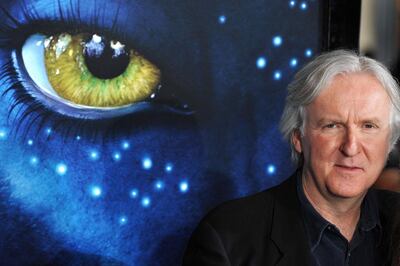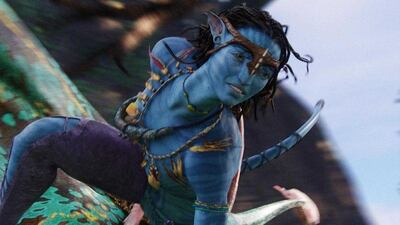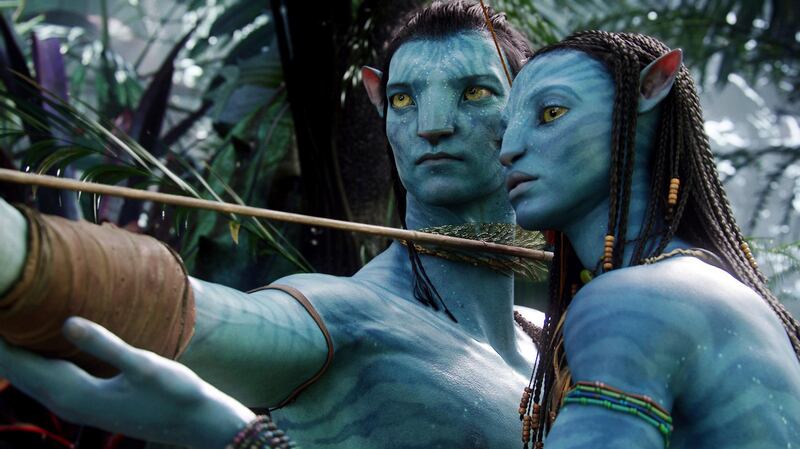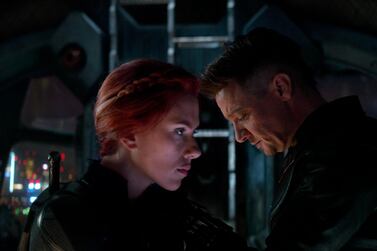Disney has announced that James Cameron's forthcoming Avatar sequel has been held back a year, shifting its previous release date of December 2020 to December 2021. This probably shouldn't surprise us. If there's been one consistent aspect throughout the long gestation of Avatar 2 and its three successors, it's inconsistency.
Even before the original movie – the highest-grossing in history, at least until the release of Avengers: Endgame, which will inevitably overtake it in the next few days – Cameron was talking about it as the first in a trilogy.
A series of delays
In October 2010, almost a year after Avatar's record-breaking release, the director announced two sequels, scheduled for 2014 and 2015, respectively. But by 2012, producer Jon Landau was talking down the 2014 release in an interview with Empire magazine, saying that "production concerns" could push the release dates back.
In the intervening two years, Cameron had been busying himself buying up a huge plot of land in New Zealand, supposedly to shoot the film on, and in late 2013, the New Zealand government confirmed the news: there would be three more Avatar movies, all shot in the country.
Since this announcement was made in December 2013, it was pretty clear that the sequel was unlikely to make that original 2014 release date. Especially given that around the same time, Fox revealed that the scripts were "just starting to be written".
No one was too surprised, then, when Fox moved back the release date to December 2016, a date that Cameron himself would then push back a further year, saying in a statement that "there's a layer of complexity in getting the story to work as a saga across three films that you don't get when you're making a stand-alone film … we're writing three simultaneously. And we've done that so that everything tracks throughout the three films. We're not just going to do one and then make up another one and another one after that."
By April 2016, things had changed again. Now, there would be four sequels to the original Avatar, with the first to be released in December 2018 and with subsequent releases scheduled for 2020, 2022 and 2023. Less than a year later, Cameron was telling the Toronto Star: "Well, 2018 is not happening."
Shooting three films simultaneously
A month after that interview, in April 2017, Fox unveiled new, totally official, set in stone, absolute, unmovable release dates for the films: December 18, 2020; December 17, 2021; December 20, 2024; and December 19, 2025. Finally, audiences knew exactly what was going on. The only thing that could be possibly change this now would be some huge unexpected event, like Fox being swallowed up by a larger studio or something, and that would never happen, surely? Only Disney or Warner Bros are in that sort of a position, and such a takeover would surely attract all sorts of intimate inspection over monopoly laws, so would be very unlikely, to say the least.
In March this year, Disney completed its takeover of Fox, which brings us up to date. Avatar 2 will now hit screens in December 2021, with the next three films released in the same month in 2023, 2025 and 2027. So why the constant delays? Well, first of all, it's not actually that long a delay in Avatar terms. Cameron originally started working on the first movie in 1996, and took 13 years to get it to theatres, so the scheduled 12 years we'll have waited for the second film is actually pretty good, particularly considering that Cameron is shooting all four sequels simultaneously. He's actually working at light speed, comparatively.
Secondly, Cameron is known as a perfectionist, and it sounds like he’s going into a lot of detail with these films. He told the audience at the Hero Complex Film Festival in 2014: “The first thing I did was sat for a year and wrote 1,500 pages of notes of the world and the cultures and the different clans and different animals and different biomes and so on.”

Thirdly, at the same festival, the director revealed he had three teams of writers (presumably now increased to four with the addition of an extra film) spend around eight months working together on the story until every detail was worked out, then split them off, each with one chapter of the story to write – and Cameron himself sat on every writing team. This was clearly never going to be a quick job.
Further to this, Cameron is shooting all of the films together – not back-to-back, but at the same time as each other. Essentially, each individual film will need to be completely shot before a single one can be completed. There may be some leeway with the way the shoots are scheduled, but on the face of it, there's no option to get the second finished off, then come back to the third. It's all or nothing – a mammoth task.
Improving technology
For Avatar, Cameron had to invent a lot of the technology to shoot the groundbreaking motion capture CGI. The director truly can be credited with personally creating much of the technology that powers so many of today's big budget CGI, 3D and motion capture bonanzas. It sounds like he's had to go through a similar process this time around, not only in terms of improving the technology, but also making it work underwater, where much of Avatar 2 is set to take place.
Cameron has spent a significant amount of time in recent years travelling round the world in his purpose-built submarine making documentaries and also, we assume, testing his new toys for this sequel in the field.

He told Collider in November 2017: "It's never been done before, and it's very tricky because our motion capture system, like most motion capture systems, is what they call optical base, meaning that it uses markers that are photographed with hundreds of cameras. The problem with shooting in water is not the underwater part, but the interface between the air and the water, which forms a moving mirror. That moving mirror reflects all the dots and markers, and it creates a bunch of false markers."
Cameron went on to reveal that he had just successfully completed shooting his first scene with the new tweaks, and added: "We're getting really good data, beautiful character motion and great facial performance capture. We've basically cracked the code."
Pitting films against one another
Finally, and perhaps most significantly, we come back to that Disney takeover. The shifted release date certainly seems to fit in neatly with their release schedule. Disney already has Steven Spielberg's much-touted adaptation of West Side Story slotted in as its big Christmas 2020 blockbuster, and they're not going to want to compete with their own film.
By moving the Avatar release, and those of its sequels, Disney doesn't just give Cameron extra time to finish the job, it also ensures that, by alternating Avatar films with its forthcoming Star Wars slate, Disney has the lucrative pre-Christmas box office sewn up until 2027, with an Avatar film every odd-numbered year, and Star Wars every even number. It'll take a brave studio to put anything too high-profile up against such mammoth franchises – one based on the highest-grossing film of all time, the other the second-highest-grossing franchise of all time. The only thing that could realistically compete with that would surely be the highest-grossing franchise of all time, the Marvel Cinematic Universe, and guess who owns that?
It's a masterstroke by Mickey Mouse and the gang, and with a further eight Marvel movies due to come by summer 2022, as revealed in the same announcement as Avatar's new date, there should be some very happy faces in the crowd at the media giant's next shareholder meeting.






